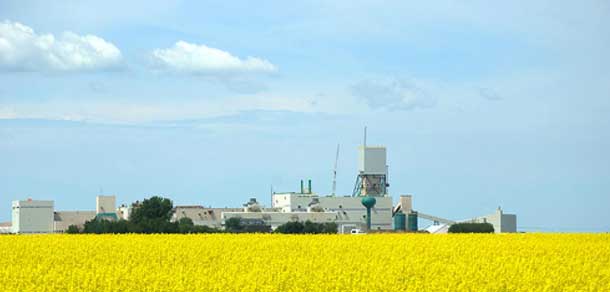For those unfamiliar with the mining industry, outdated images and misconceptions run deep (maybe even deeper than Mosaic’s new underground potash ore shaft in Esterhazy). The word ‘mining’ gets a mixed review from those who have not experienced the opportunities it can bring—nor understand how important mined products are to their lives.
 According to Mosaic’s Senior Vice-President Karen Swager, P.E., the industry needs to work harder to dispel misunderstandings and enhance its brand.
According to Mosaic’s Senior Vice-President Karen Swager, P.E., the industry needs to work harder to dispel misunderstandings and enhance its brand.
“We don’t spend enough time talking about the good things that come from mining. We make a huge contribution to the economy in terms of both taxes, jobs and contracted goods and services,” she said at the 2019 Saskatchewan Mining Week breakfast sponsored by APEGS and the Saskatchewan Chamber of Commerce.
Swager noted that the potash industry alone contributes $5.2 billion to the national economy including employing over 20,000 people, directly and indirectly.
Contrary to popular belief, the mining industry in Canada is also one of the safest employers.
“Not every country can say that. It can sometimes be hard to compete with countries that don’t have the same compliance standards and costs that we have in Canada.”
From an environmental perspective, Swager pointed out that, in potash in particular, the Canadian industry is a leader.
“Our mines produce only 29 per cent of the greenhouse gas emissions of the global average of potash mines. That’s a tremendous accomplishment and, here again, we aren’t doing enough to tell people about it.”
These gaps between perception and reality come down to the challenge faced by the industry in securing its social license.
“While acquiring a regulatory license is of course very important, it’s just as important to secure a social license.”
“This can be difficult because it’s less definitive, less tangible. It means ensuring that the people support us and want us to be operating in their communities.”
A big part of this, Swager says, comes simply from putting emphasis on outreach and engagement. From Mosaic’s perspective, the company is focusing on participating in more speaking engagements, establishing more community outreach and engaging in more discussion with stakeholder groups such as the Indigenous communities surrounding their operations.
Mosaic has also established a respected culture of giving back to the community.
“We strongly believe our communities are our partners. We live with, work with and care about these communities.”
For its part, Mosaic spends roughly $5 million in community giving initiatives annually; including $2 million over five years to local food banks. Recently they announced $1 million in matching funds for updated equipment at the Mosaic Heart Centre at the Regina General Hospital.
The company strives to identify strategic opportunities to target 15% of its community investment budget to grant funding initiatives and projects that are important to the growth and sustainability of the Indigenous communities in the areas where they operate.
As well, Mosaic has a goal to have Indigenous people fill 15 per cent of its new hires and contractors.
But while the company is doing a great deal to secure its social license, it is not resting on its laurels.
“Increasingly, this is something to which regulators are paying attention. They don’t just want to know about the technical standards or the economic benefits. Regulators want to hear about the social benefits of projects. It is important for everyone in the industry to be aware of this and continually work to improve their engagement with their stakeholders” Swager said.
